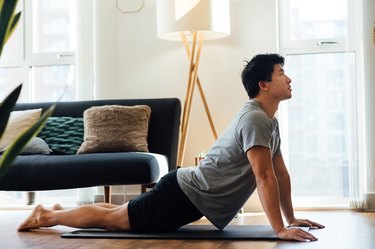
There's more to flexibility than being able to touch your toes or binding your arm around your leg. In fact, flexibility enables you to do everyday tasks without pain or restriction — and it comes in many forms.
In fact, yogis contorting their bodies into different shapes isn't the norm. In reality, there's no set standard for flexibility. Everyone from pro runners and weight lifters to the average athlete needs to be flexible to help prevent injury and move with ease.
Fortunately, anyone and everyone can work toward better flexibility, and the key is to make it a bigger part of your workout routine. Here, we'll walk you through exactly how to do that with this comprehensive guide to flexibility.
The Health Benefits of Flexibility
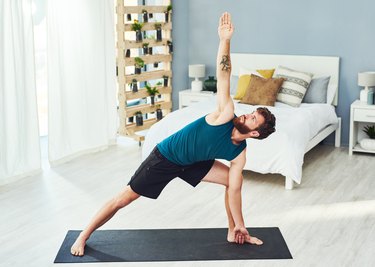
Flexibility refers to the way your muscles enable you to move a joint through its complete range of motion. But what does that mean, exactly? Range of motion is the extent to which you can move a specific joint, from flexion to extension. That can look like deepening a quarter squat to a full squat, or extending your leg from 45 degrees to 140 degrees.
When you're able to access full range of motion, you're more likely to move and exercise with ease. Being flexible also helps reduce pain, since more flexible muscles and joints means less tightness and stiffness.
Learn more about the benefits of flexibility, and how it can improve your quality of life.
How to Become More Flexible

While genetics play some role in how naturally flexible you are, there are steps you can take to increase your flexibility and improve your range of motion. One easy way to improve your flexibility is to simply move more.
The more time you spend in a fixed position, like sitting or standing a certain way, the more stagnant you'll feel and the less pliable your joints and muscles will be. Staying in one position for long periods of time can also put pressure on certain muscles and joints more than others, creating imbalances.
Consider walking around while you're on a phone call, taking the stairs instead of the elevator whenever possible or parking your car farther away from the store's entrance when you're grocery shopping. Adding these small bouts of movement might seem minor, but they add up to major flexibility benefits.
Incorporating more flexibility training activities, like yoga, into your workout routine can also help with lengthening your muscles and loosening the joints.
Discover the most effective ways to increase your flexibility.
The Different Types of Stretches
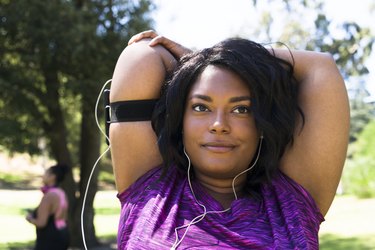
Once you're ready to create a stretching routine, keep in mind there are different types of stretches — and when you perform them plays a role in how effective they'll be.
Take static and dynamic stretching, for example. Static stretching involves holding poses for several seconds at a time and is best for cooling down after a workout because it helps relax and lengthen the muscles. On the other hand, dynamic stretches are a form of active stretching, in which you're moving and stretching at the same time.
Dig into the most common types of stretches to improve your flexibility.
The Best Back Stretches
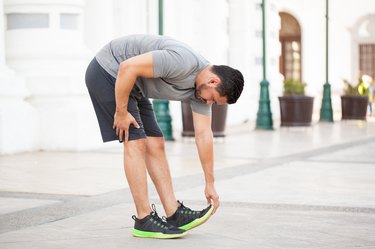
Got a back workout on deck? Before you dive into the exercises, make sure to warm up your back muscles, including your traps, lats and the thoracic (upper- and mid-back) and lumbar (lower) spine. Doing some dynamic back stretches will help prepare your spine for movement and relieve knots and areas of tension.
Because your back is interconnected with other muscle groups, these dynamic back stretches not only elongate the spine, but they also activate your shoulders, arms and core.
Incorporate these dynamic back stretches into your upper-body warm-up.
The Best Hip Stretches
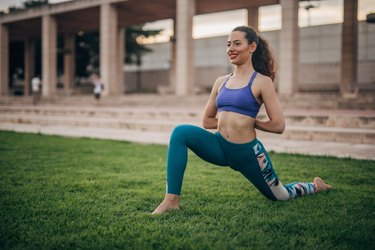
If you sit at a desk all day, chances are you have tight hips. Sitting shortens your hip flexors while lengthening your glutes. But you can start to undo the tightness in your hips with some dynamic and static stretching throughout the day.
The best hip stretches open up your hips in all directions through extension, flexion and rotation, while improving blood flow to your lower body, helping undo some of the stiffness from sitting. They also warm up the legs, including your calves and quads, so your muscles and joints work together to make exercise more effective.
Try these dynamic hip stretches to release tension and improve your range of motion.
The Best Hamstring Stretches
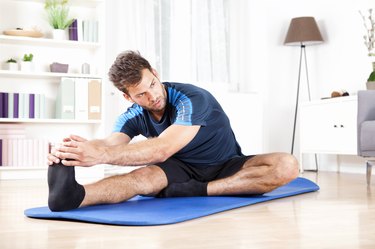
Your hamstrings can get tight from exercise, especially if most of your workouts involve running, cycling and strength training. Even just sitting can lead to poor posture that contributes to tightness in these back thigh muscles.
To help your hamstrings recover, aim to do a variety of dynamic stretches before your workout and static stretches after or on rest days. While foam rolling and massages can help, too, static hamstring stretches help make your muscles more flexible and lubricate the surrounding joints in minutes.
Check out these hamstring stretches to loosen and lengthen muscles.